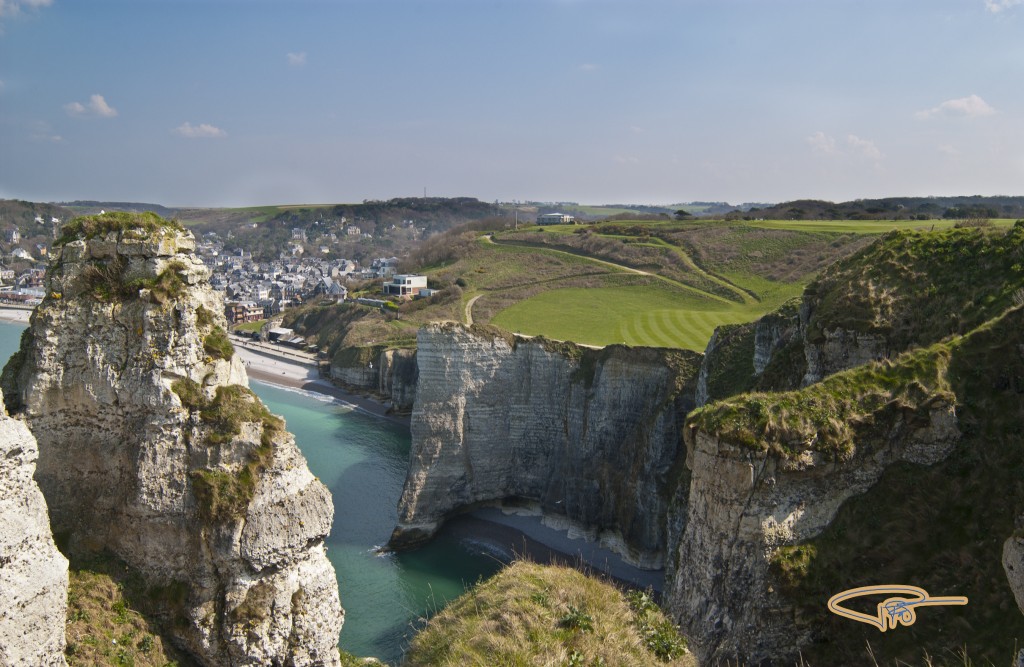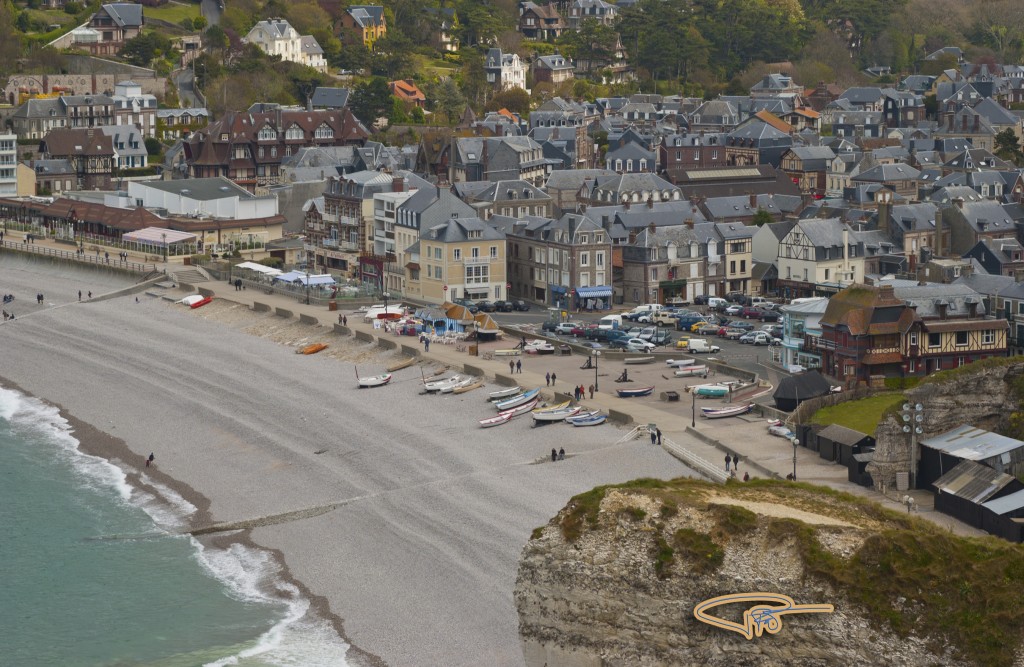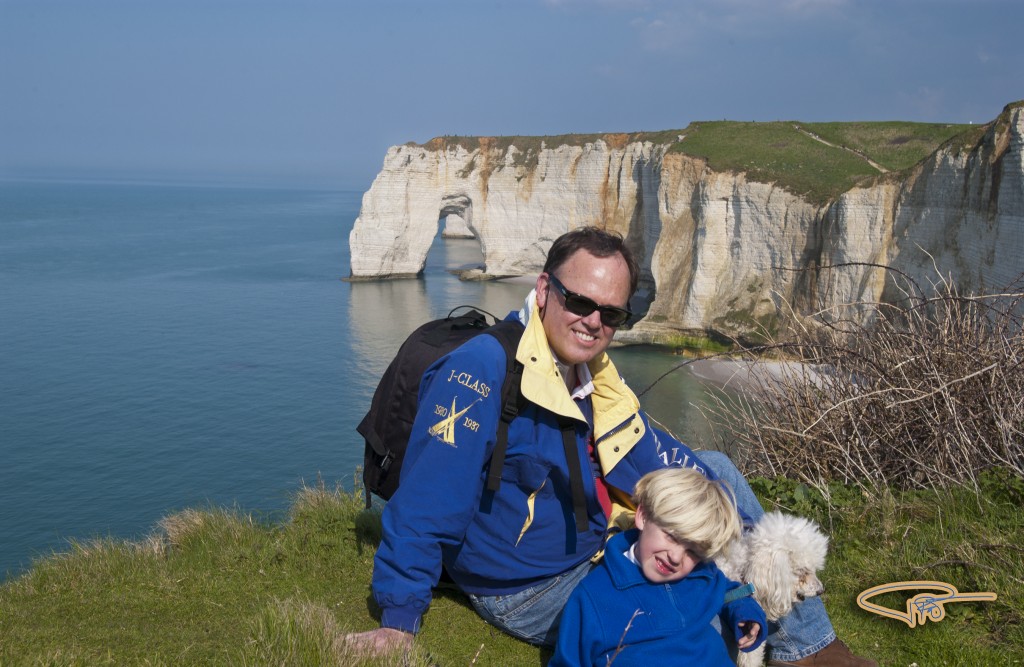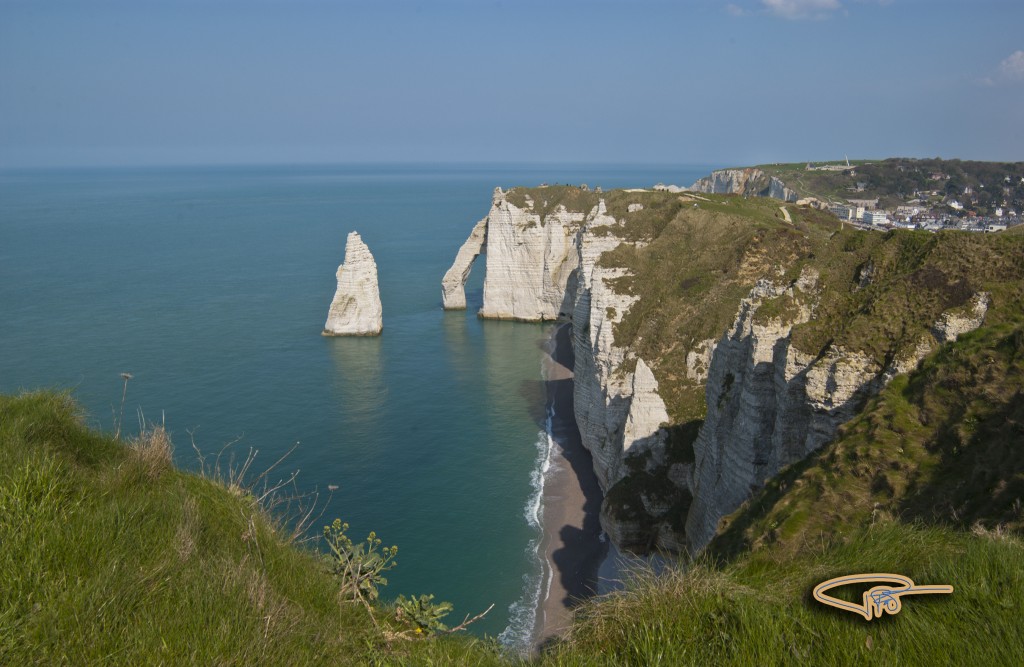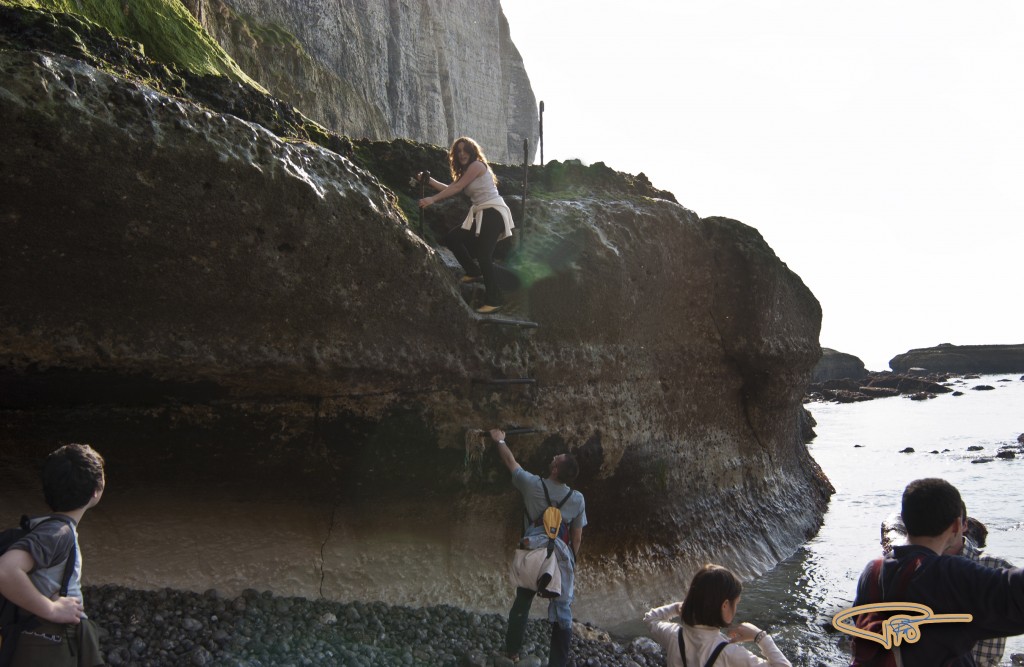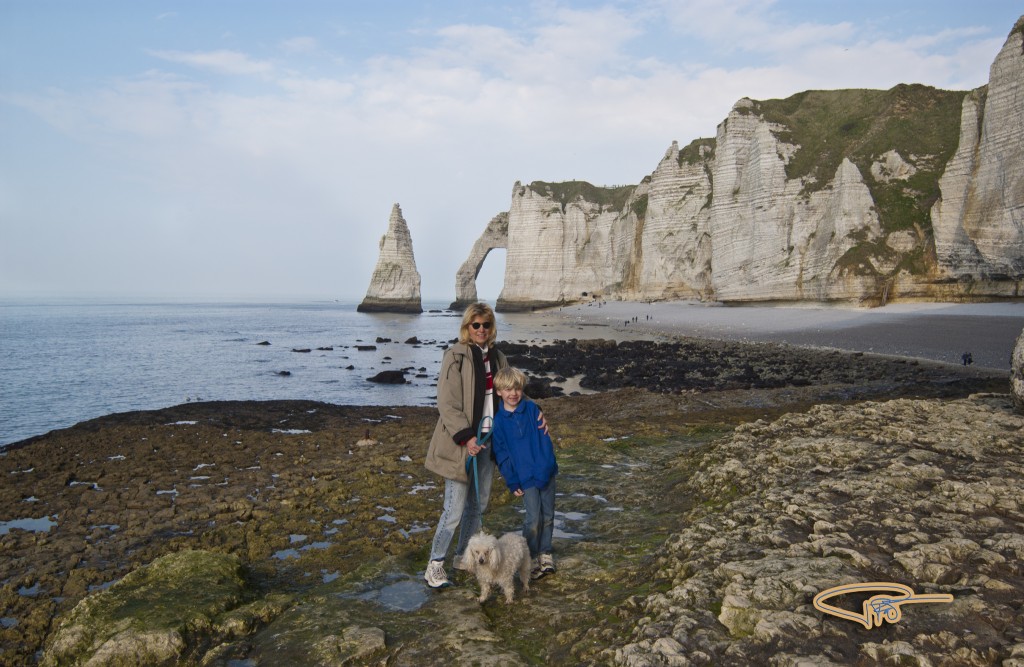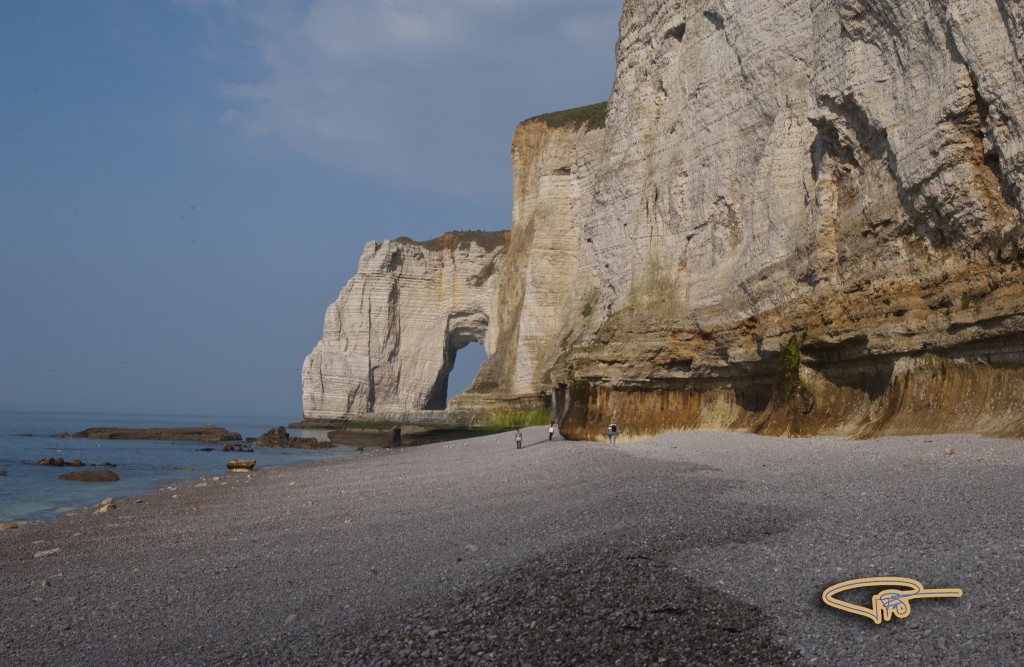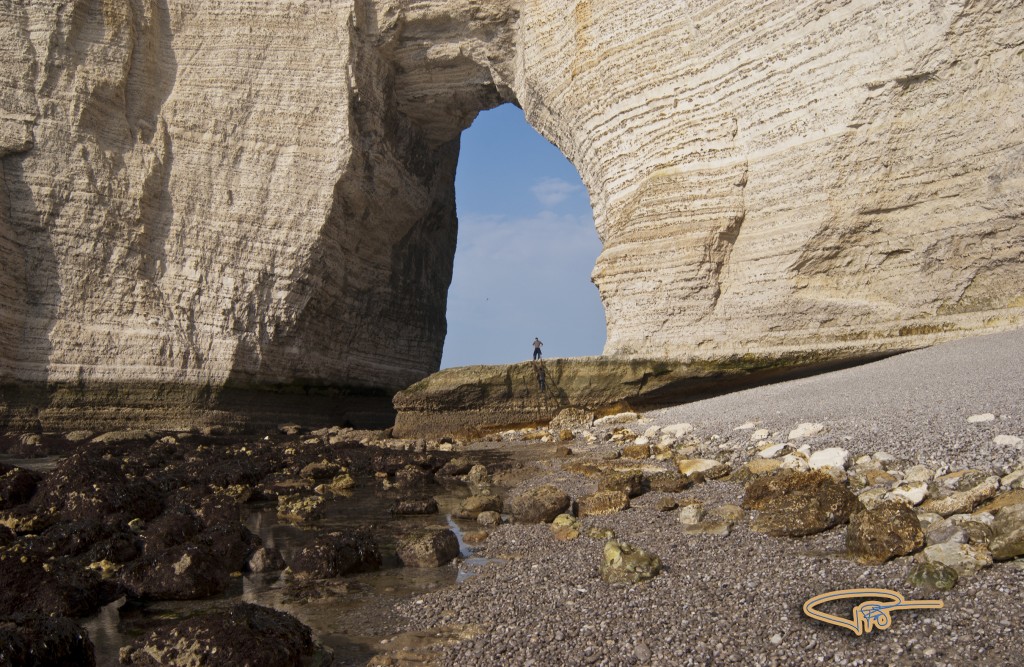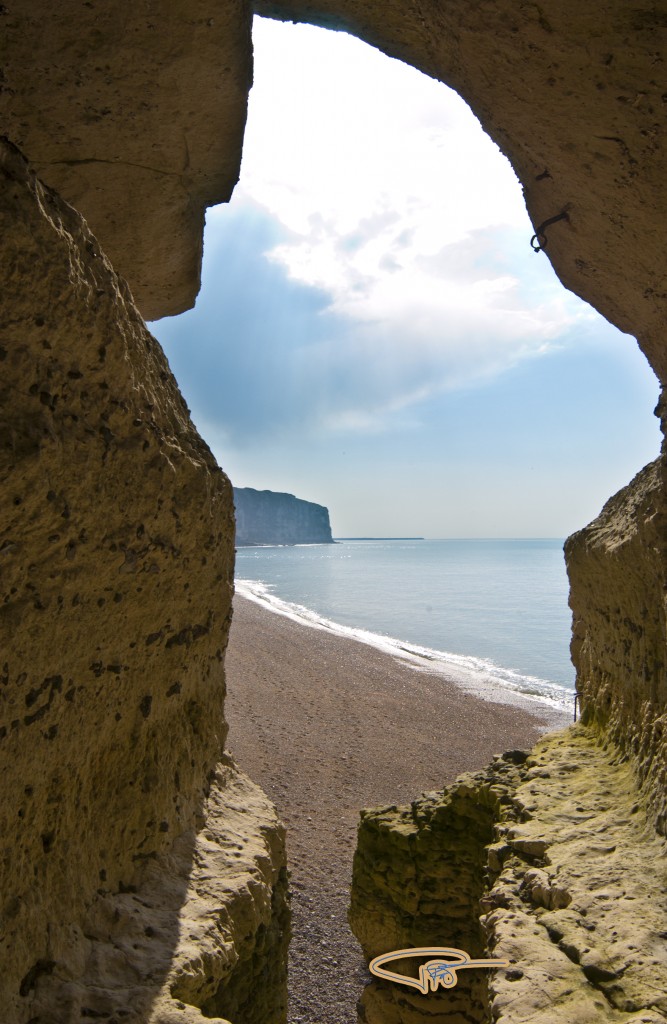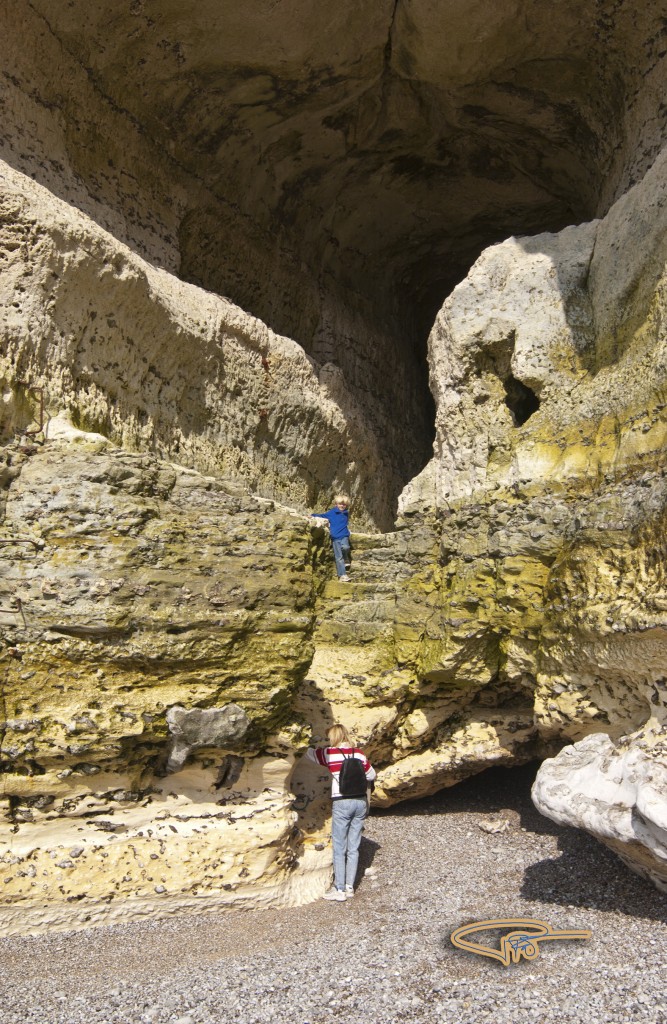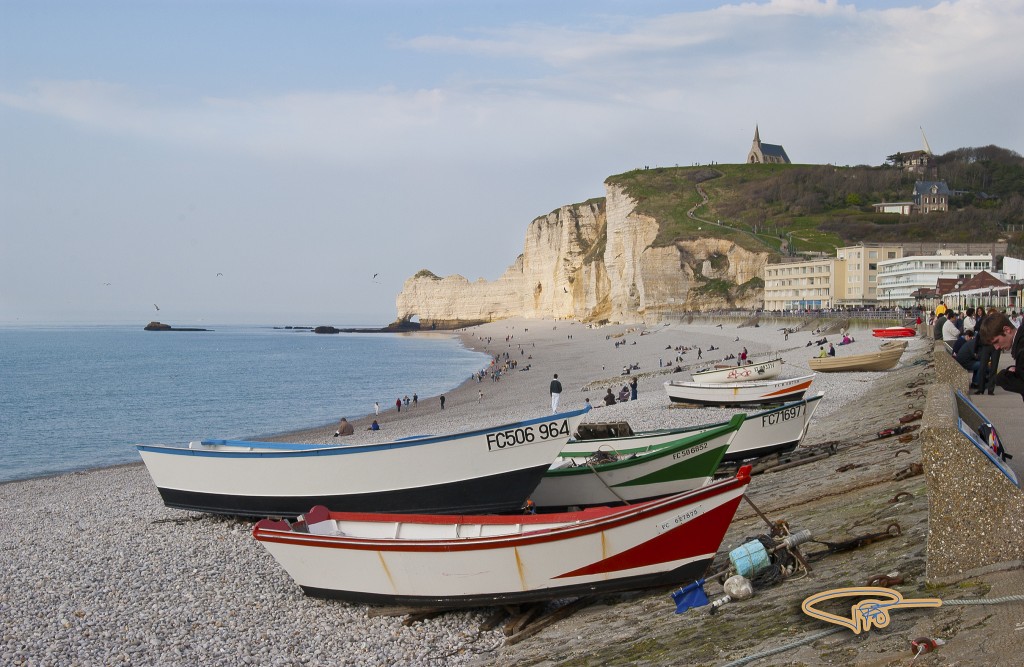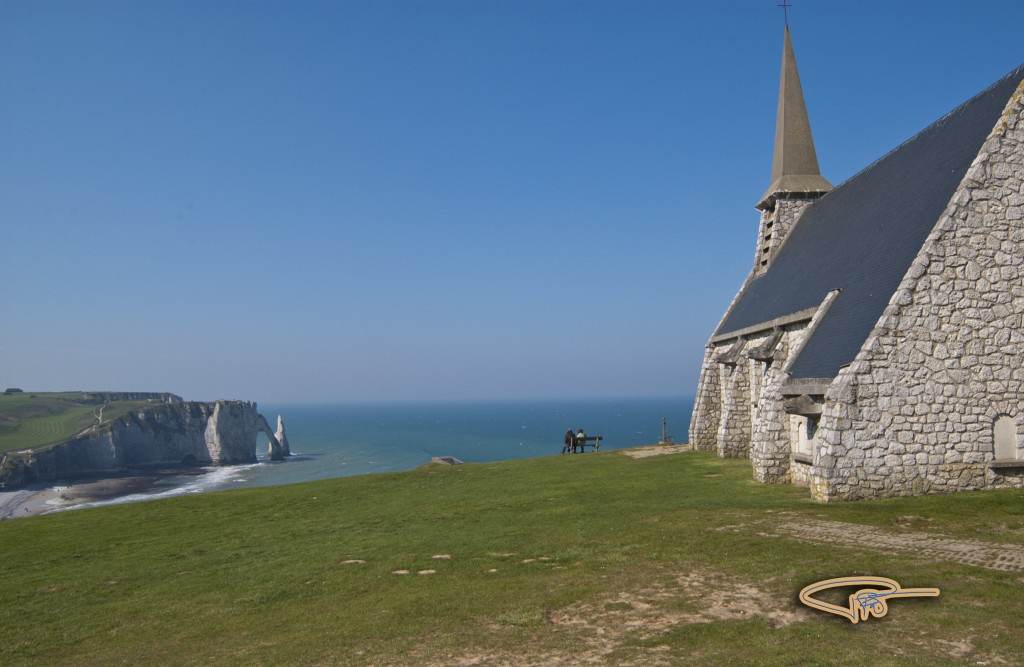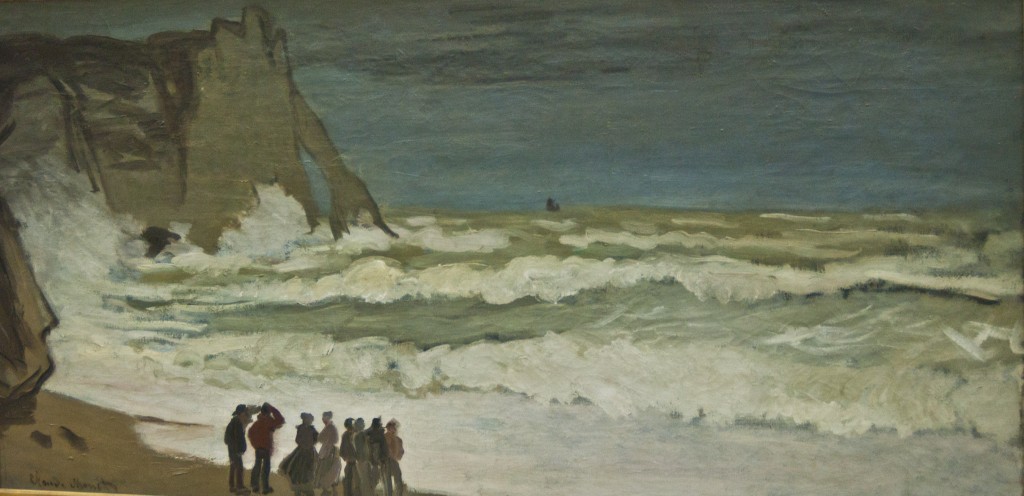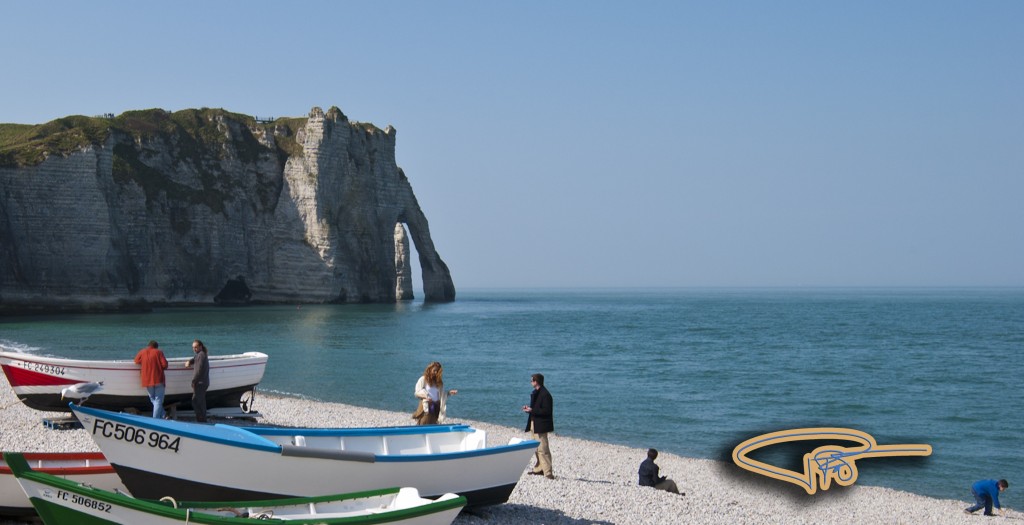Étretat is one of my favorite destinations. It’s a magical place on the northern coast of France, with imposing cliffs jutting out along the sea front from the town. The views are imposing, both from the town itself and then looking back down from the top of the cliffs.
Arriving at the seafront from the town, there’s a nice boardwalk to stroll along, bordered by cafes and restaurants as well as a casino. The restaurants have tables outside where you can enjoy the view of the cliffs and the sea while partaking in the various delicacies offered. Glass partitions bordering the restaurants facing the sea will protect you from winds if they happen to be blowing in.
Once you’re ready to walk, there are multiple adventurous paths to hike, depending on your stamina and time allotted. There is also a challenging cliff top golf course with spectacular views if you’d like to tee it up.
My favorite walk is to head out South from the beach and begin the climb to the top of the first cliff. When you reach the top, turn back around to see the town of Etretat laid out below. The beach front is bordered by cliffs on both the North and the South.
Continue walking along the top ridge of the cliffs heading South. Hike out to the ends of the fingers reaching out into the sea to enjoy the spectacular views; just don’t fall off the edge!!
As you make your way along the cliffs, you’ll come to an area where you can climb down to the beach. It’s very important to know the tide schedule, as the water comes in and goes out very quickly. You can get trapped and end up under water if you’re not careful. Once you’ve figured out the times for low tide, the hike back to the town of Étretat along the beach is a great adventure. Not an easy adventure though. You need to be able to climb steps in the cliff and make your way around various obstacles. Let’s look at the path:
This may be the most difficult area, as it’s wet, slippery and a good drop from the last step. I had a large camera backpack and a dog to contend with!
Once you make it down, you realize how high those cliffs are. Walk along the beach, while always being aware of the tide.
You can see the dark area on the cliffs, which will soon be once again covered with water. You don’t want to be here when the tide starts coming in!!
Another ladder to climb, to get you through one of the tunnels:
This is another tunnel, smaller, longer and quite dark in the middle.
This is the one tunnel you can stay if the tide comes up. It’s completely cut off, and not recommended. Would be an interesting stay, though I didn’t attempt to try it during high tide. Climbing out the other side heading back to the town.
At low tide you can walk a long way out along the beach.
Walking back along the beach, past the colorful fishing boats.
You can also climb to the top of the cliffs on the opposite side of the town. Here you’ll see the Chapel, Notre Dame de la Garde, with it’s commanding views back over the town, the cliffs and the ocean.
Also at the top of this cliff, is a monument to the French World War I flying ace hero, Charles Nungesser and navigator Francois Coli. This was the last point in France they were seen in 1927 as they attempted to be the first to cross the Atlantic without stopping, flying in a bi-plane, “The White Bird”. They were later seen over Ireland, but never seen or heard from again. Two weeks later, Charles Lindbergh completed his trans Atlantic flight.
Étretat grew from a fishing village to a tourist destination in the late 1800’s. Many artists chose it as a destination, including Claude Monet, who over the course of several years completed more than 50 paintings of the area.
And it hasn’t changed much…except for the clothing!
I wasn’t the first to fall in love with Étretat!
Coming up next…A great place to stay and have dinner near Etretat…Honfleur…

